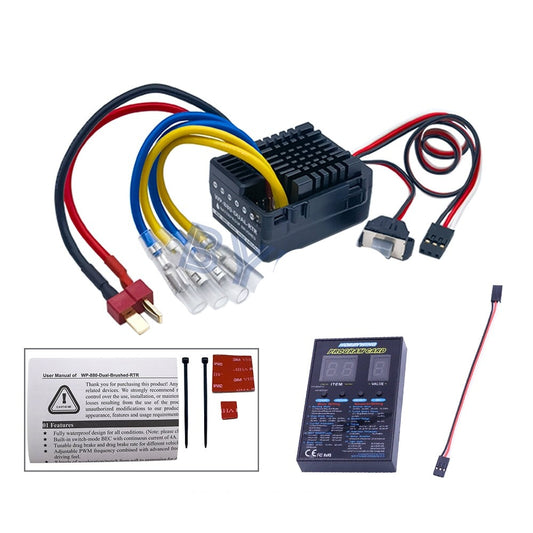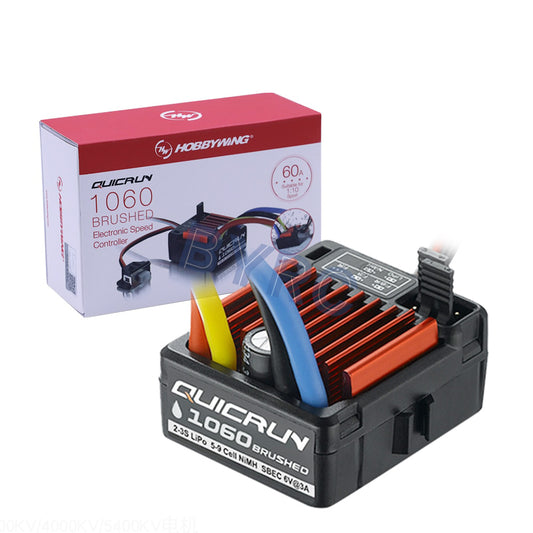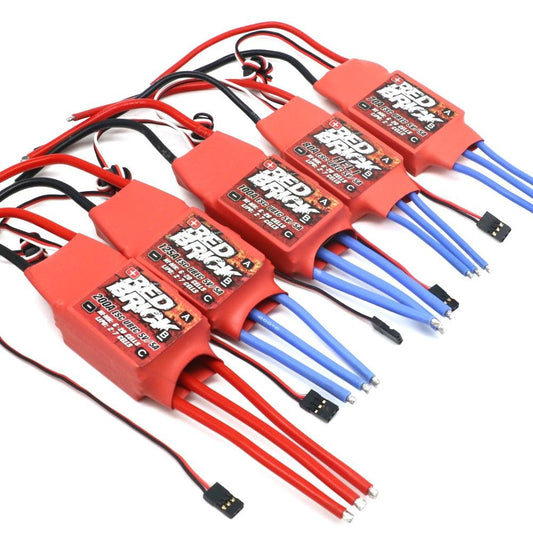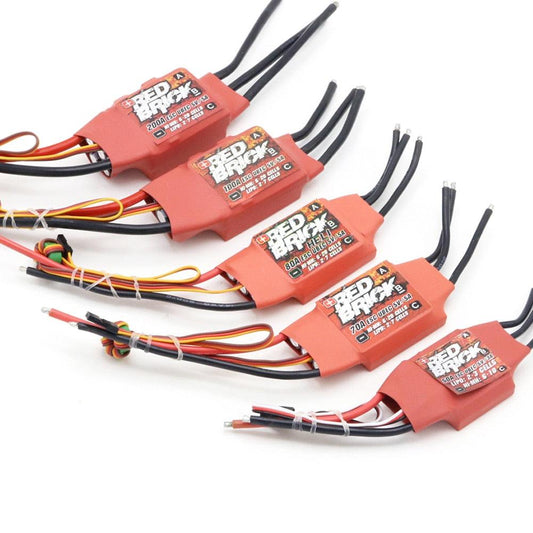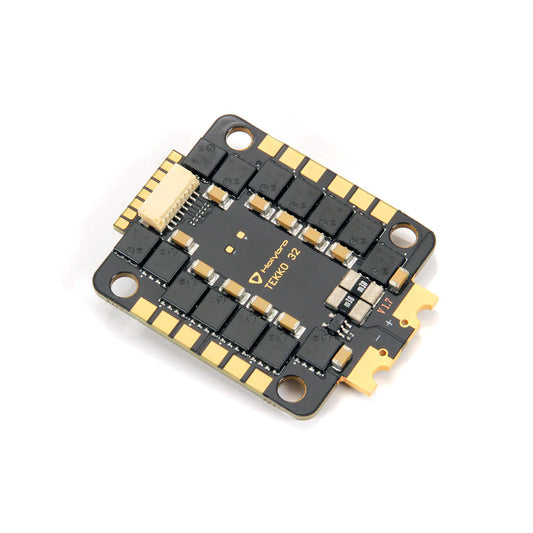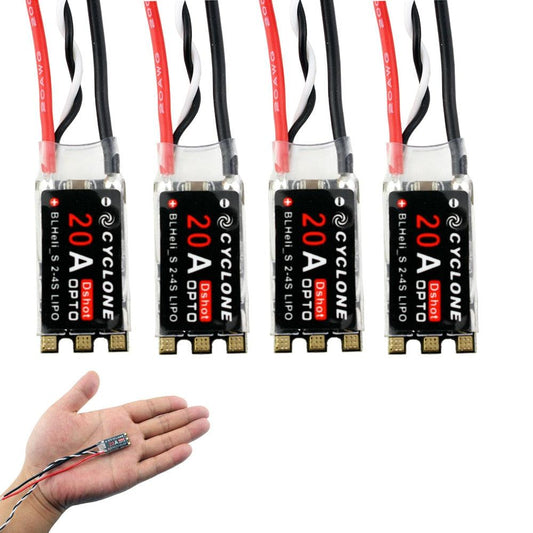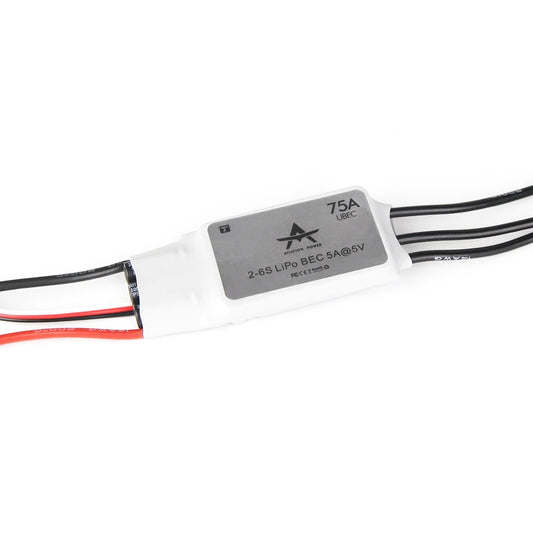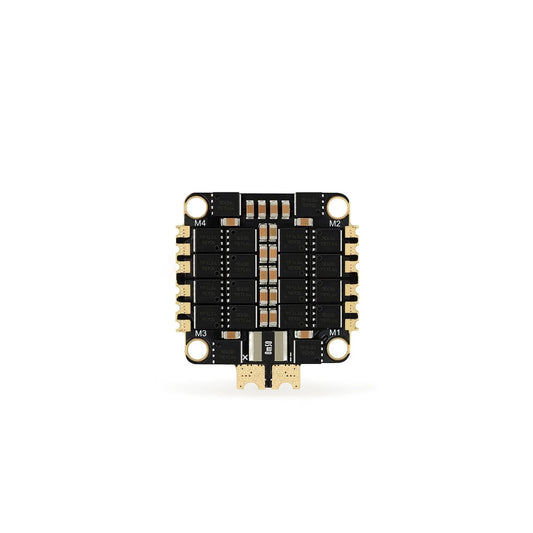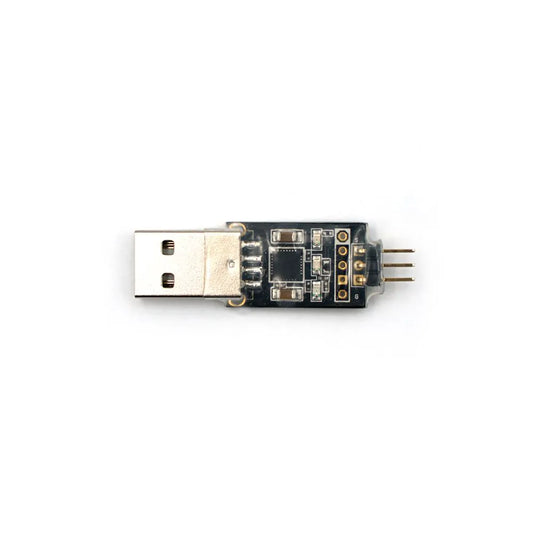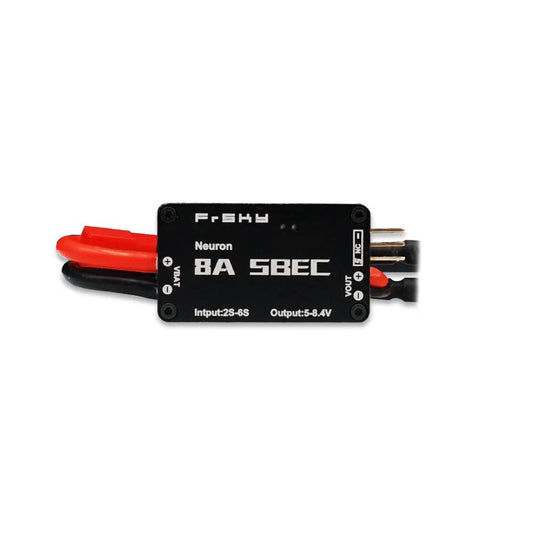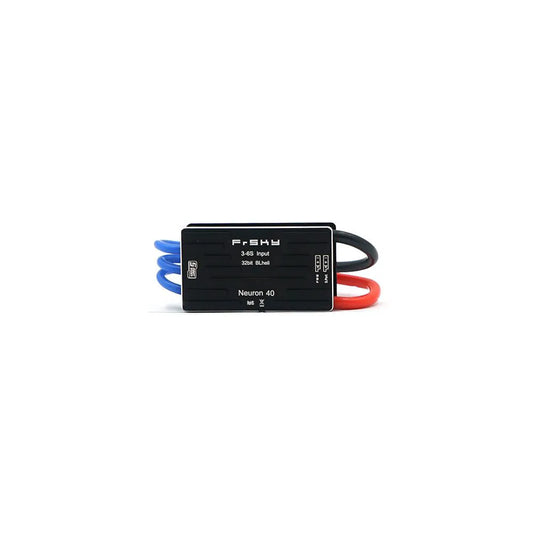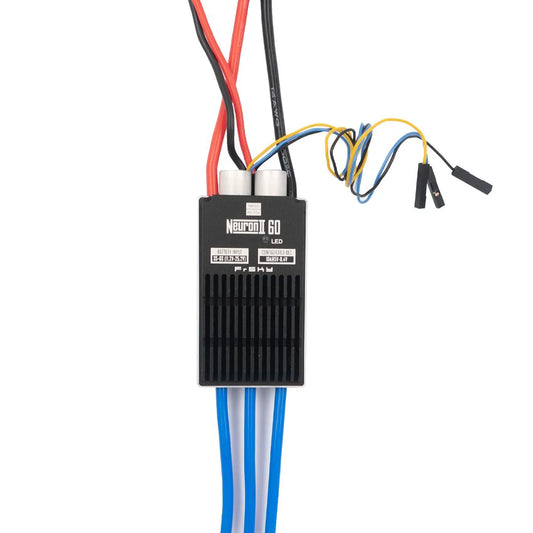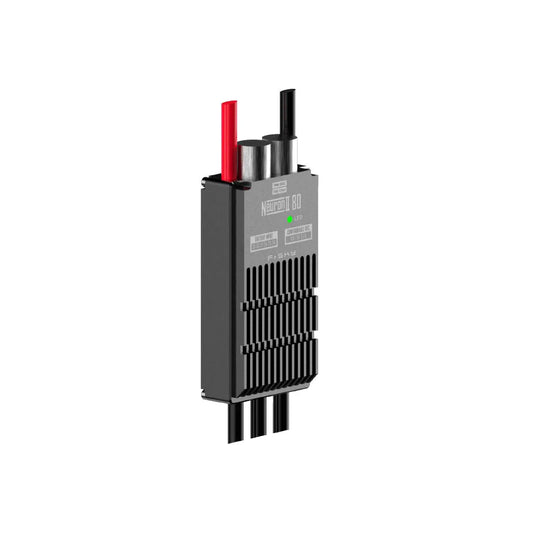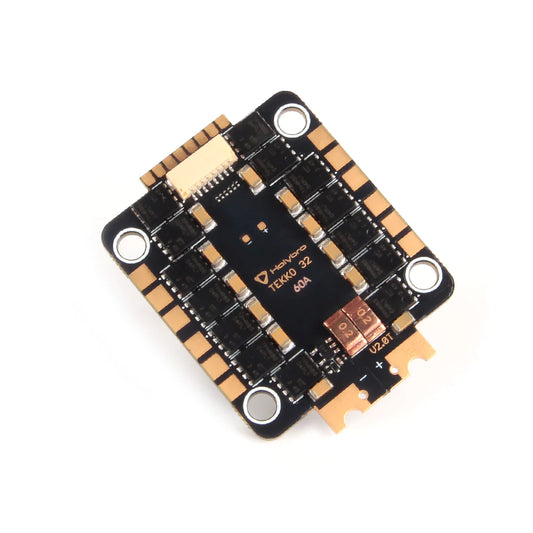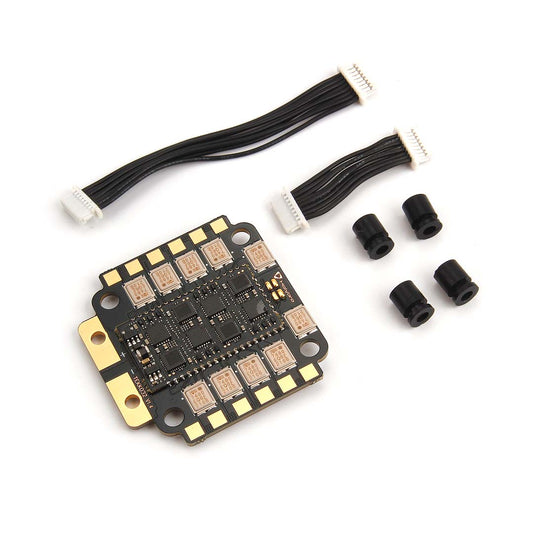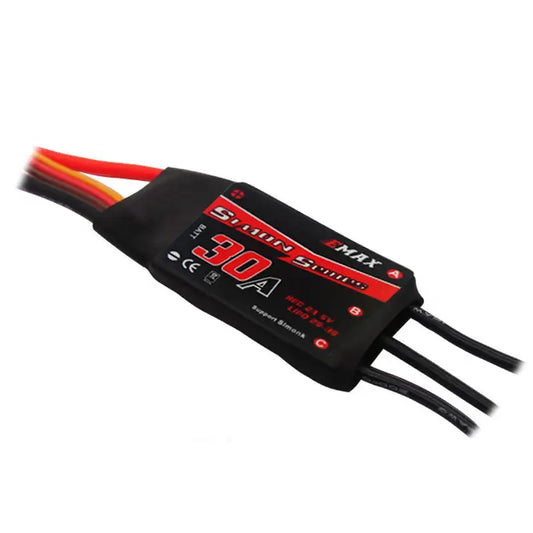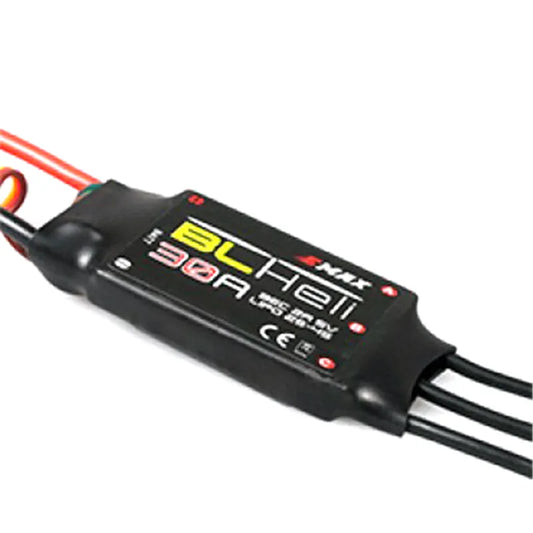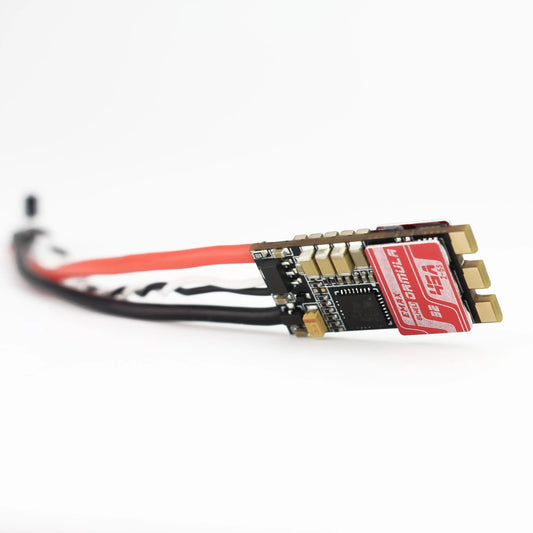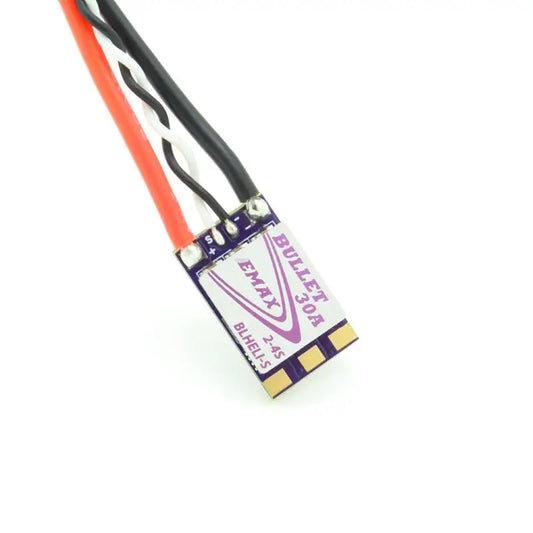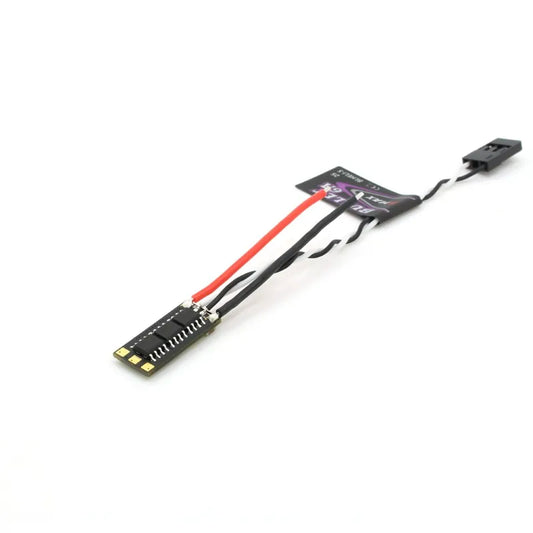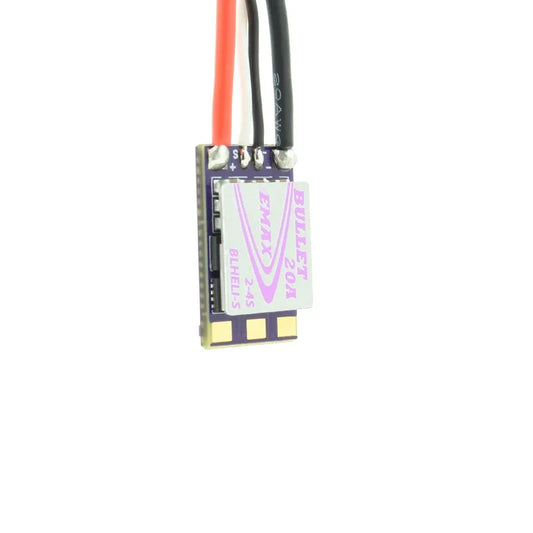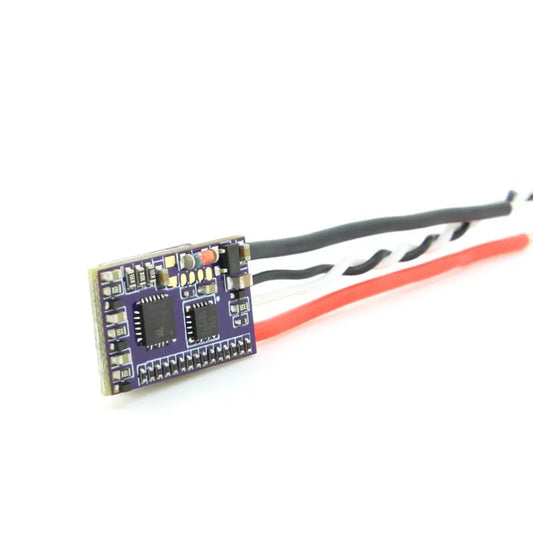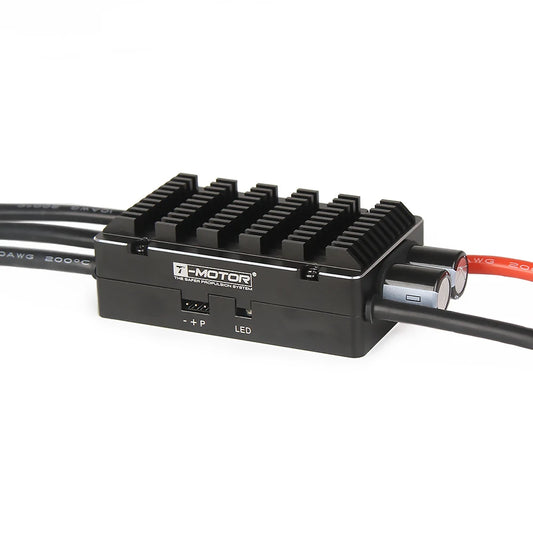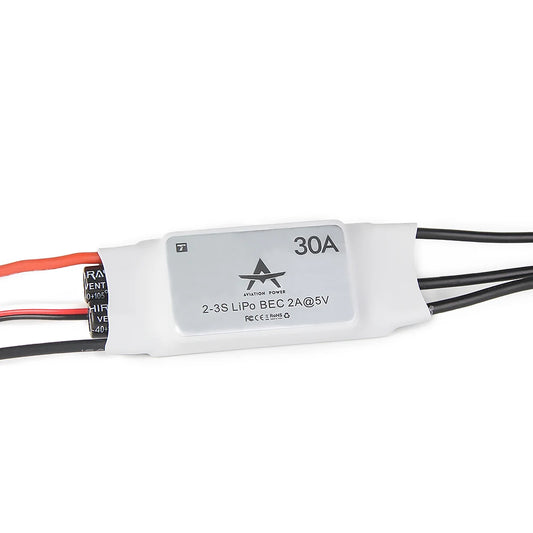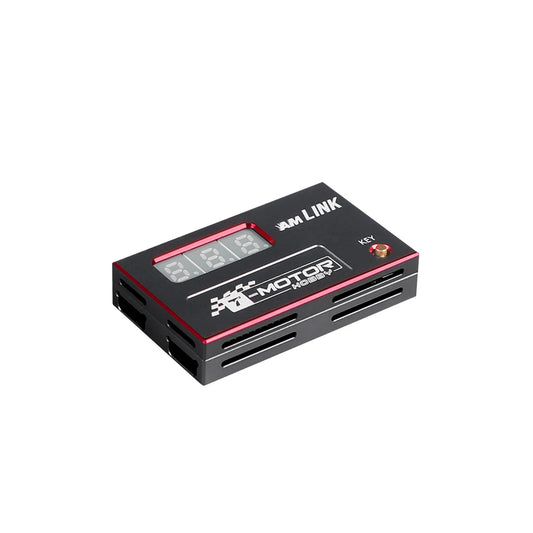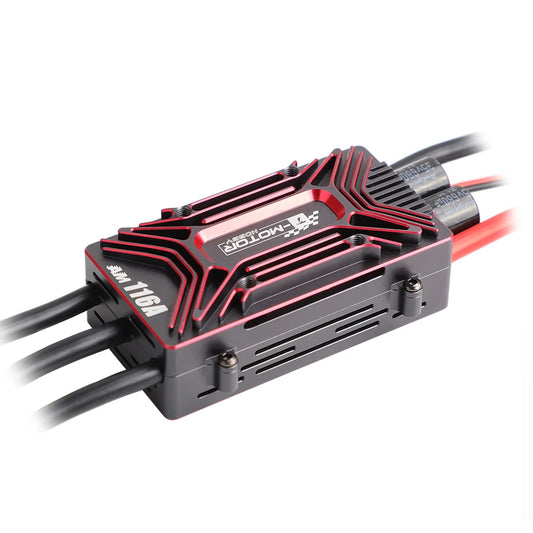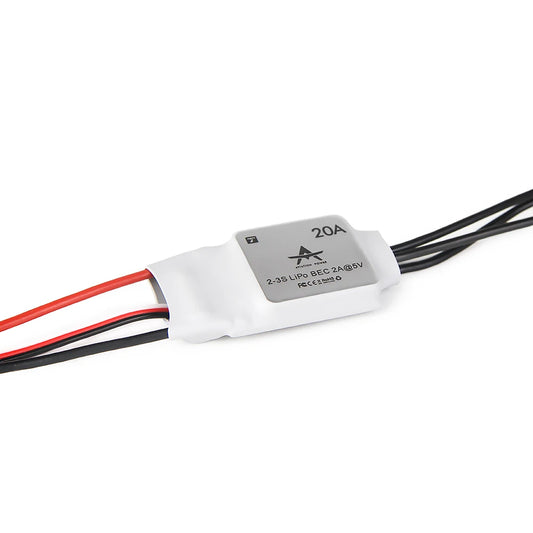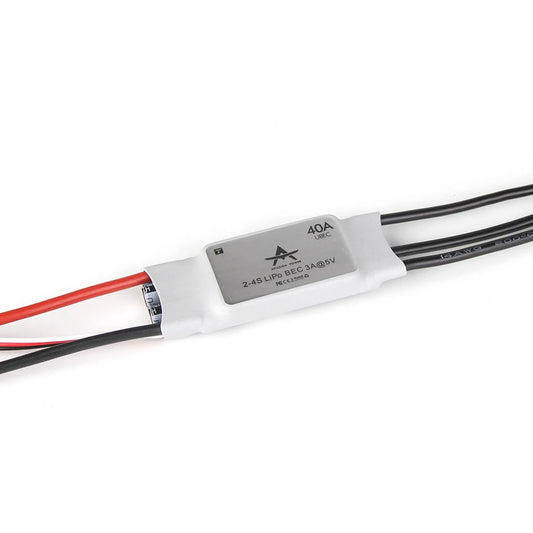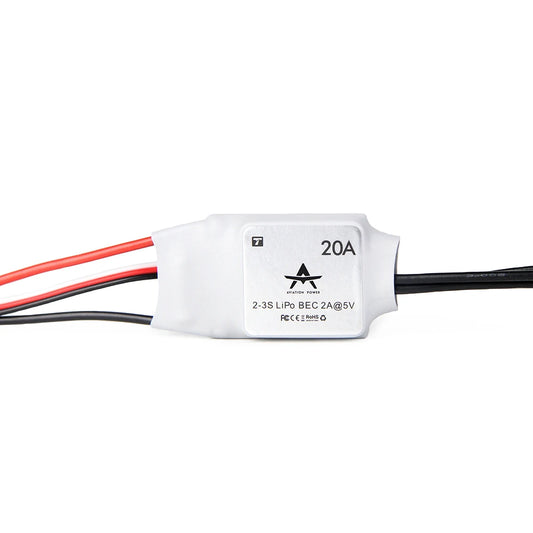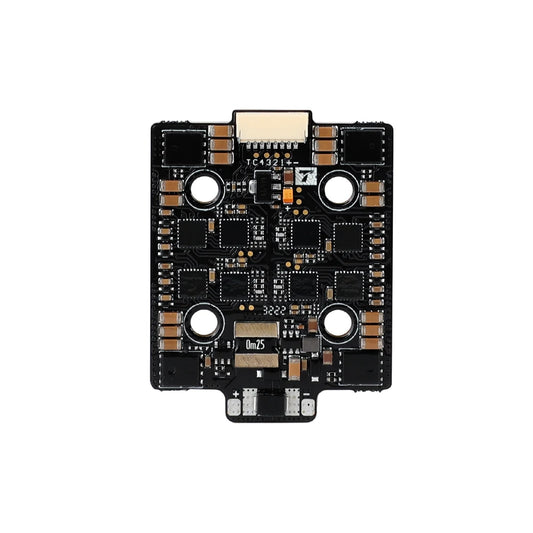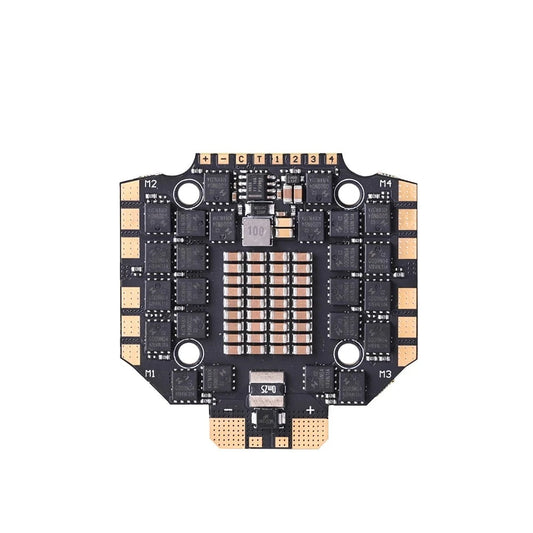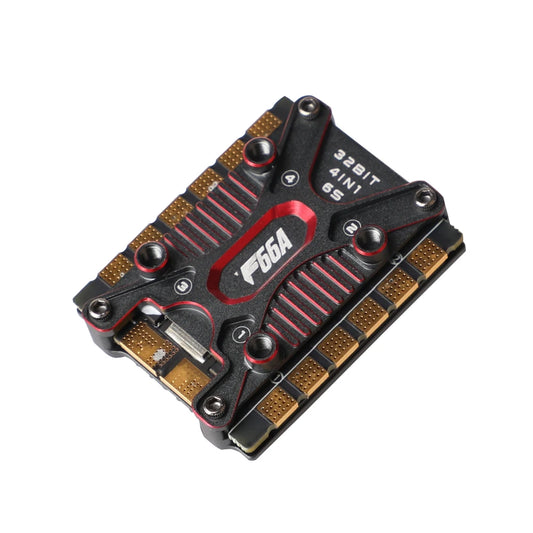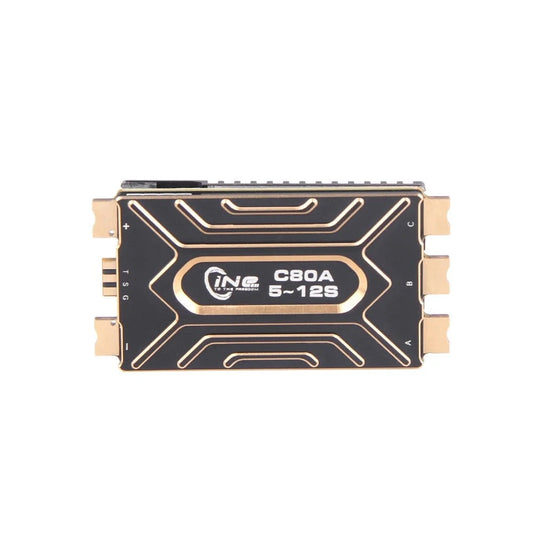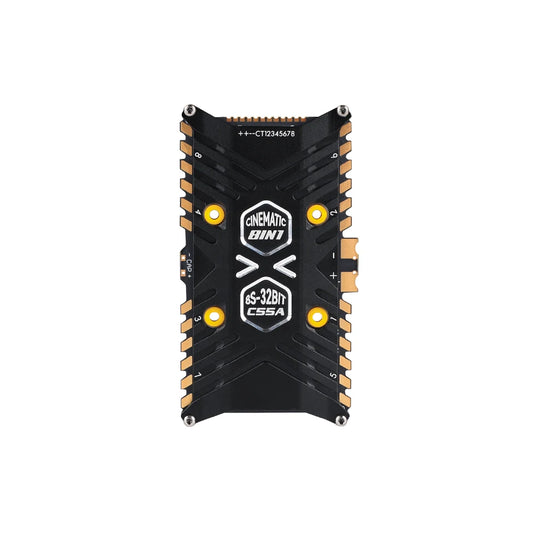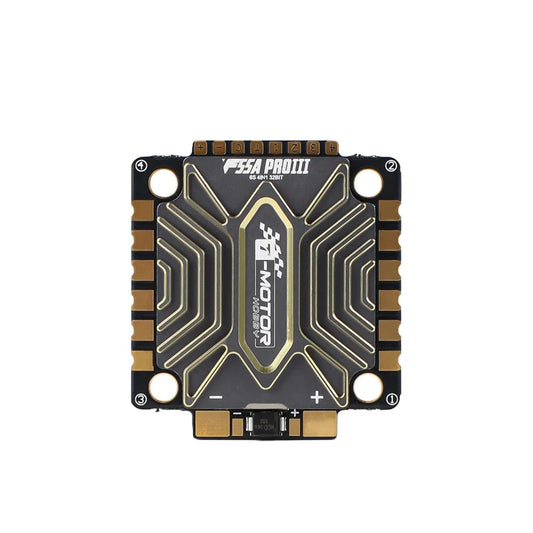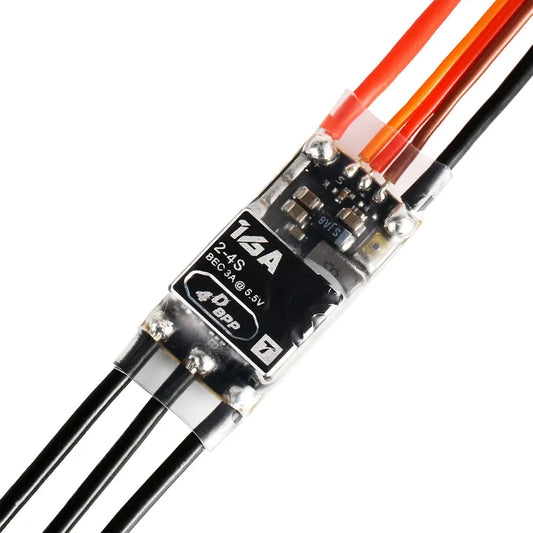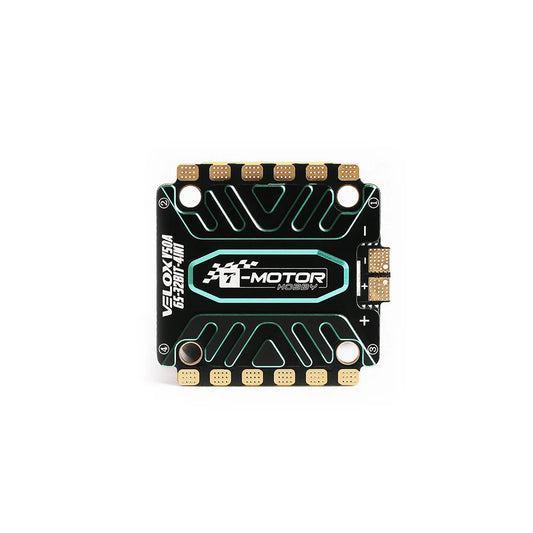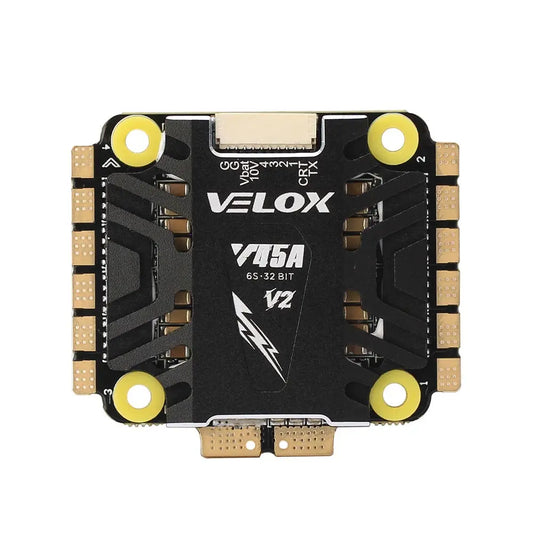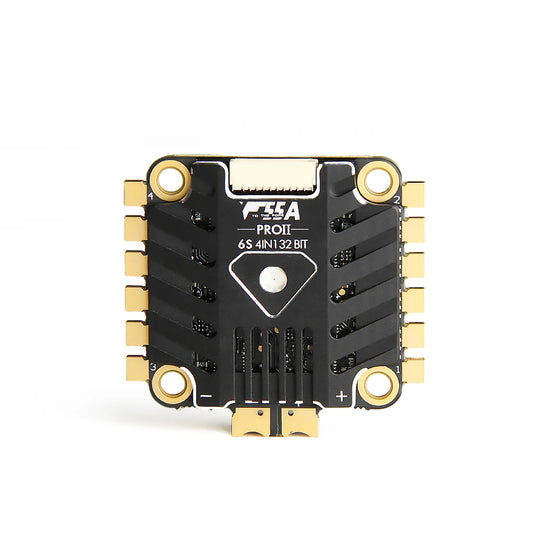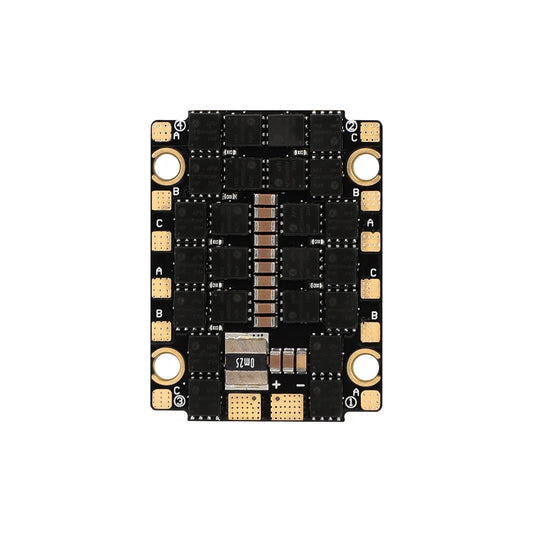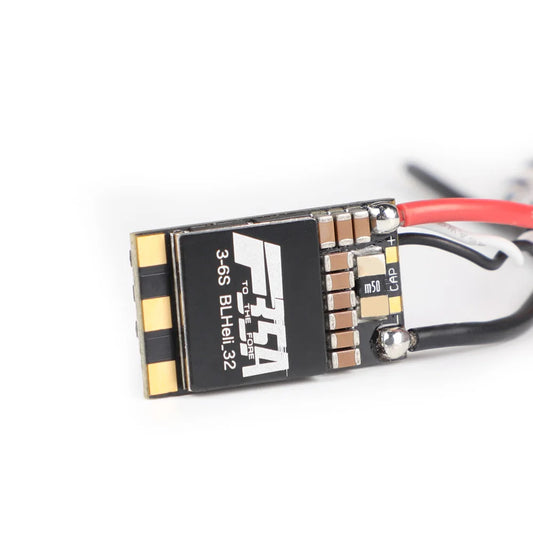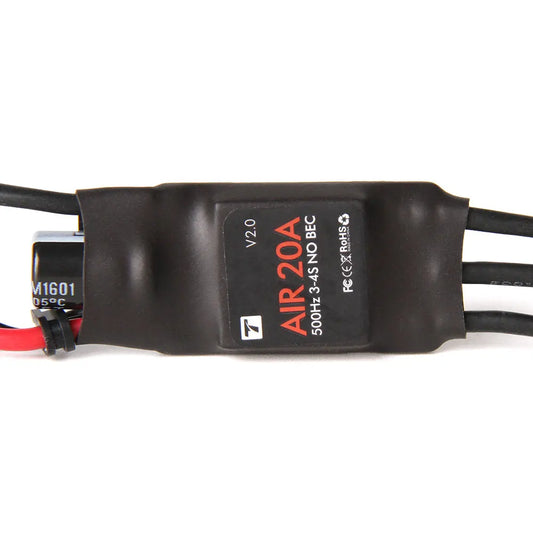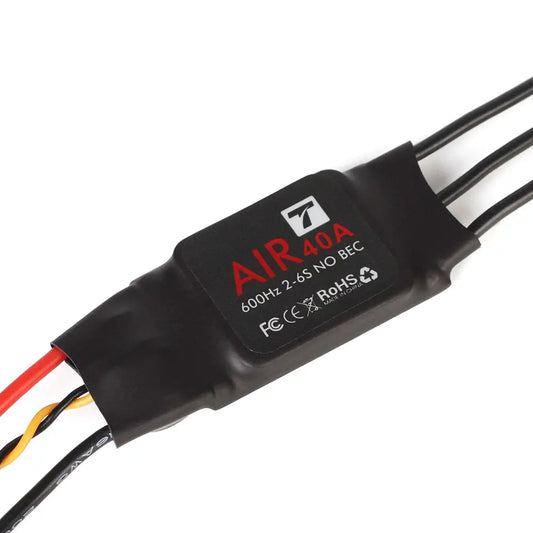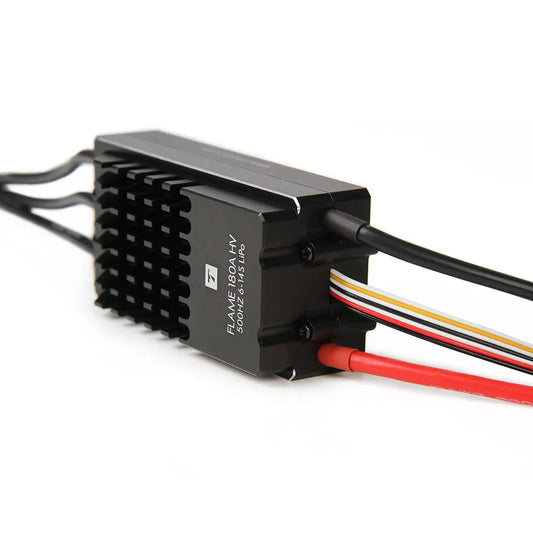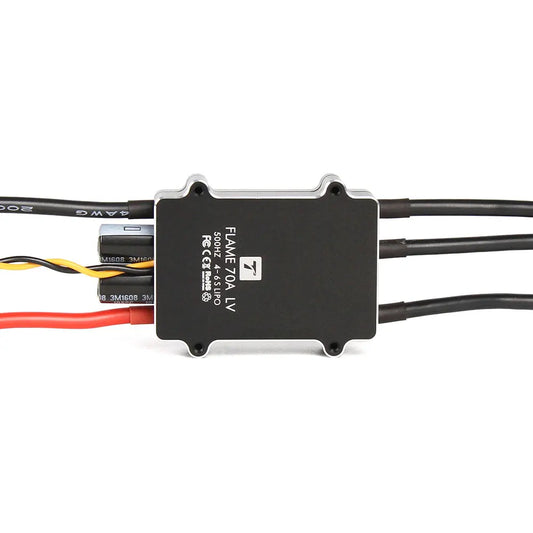-
Hobbywing QuicRun WP 880 RTR 80A Dual Brushed Waterproof ESC - Speed Controller For 1/8 RC Car
Regular price From $26.31 USDRegular priceUnit price per$36.84 USDSale price From $26.31 USDSale -
HobbyWing QuicRun 1060 60A Brushed Electronic Speed Controller ESC For 1:10 RC Car Waterproof
Regular price $24.48 USDRegular priceUnit price per$34.27 USDSale price $24.48 USDSale -
Red Brick 50A/70A/80A/100A/125A/200A Brushless ESC Electronic Speed Controller 5V/3A 5V/5A BEC for FPV Multicopter Drone
Regular price From $25.72 USDRegular priceUnit price per$41.15 USDSale price From $25.72 USDSale -
Red Brick 50A 70A 80A 100A 125A 200A Brushless ESC Electronic Speed Controller 5V/3A 5V/5A BEC for FPV Multicopter
Regular price From $19.86 USDRegular priceUnit price per$33.76 USDSale price From $19.86 USDSale -
Holybro Tekko32 F4 4in1 50A ESC
Regular price $85.00 USDRegular priceUnit price per -
BLHeli Cyclone 20A BLHeli_S ESC DSHOT 20A ESC BLHeli S Speed Controller 2-4S for FPV Raing Drone Quadcopter 210 Frame
Regular price From $13.14 USDRegular priceUnit price per$26.28 USDSale price From $13.14 USDSale -
T-MOTOR AT Series ESC - AT 12A 20A 30A 40A 55A 75A AT115A Brushless ESC for flying aeroplane radio controlled Airplane
Regular price From $13.74 USDRegular priceUnit price per$19.23 USDSale price From $13.74 USDSale -
GEPRC GEP-BLS60A-4IN1 ESC - 3-6S 60A Support Dshot 150/300/600
Regular price $52.13 USDRegular priceUnit price per$67.77 USDSale price $52.13 USDSale -
FrSky BLHeli32 USB Linker for Neuron ESC
Regular price $20.00 USDRegular priceUnit price per -
FrSky Neuron 8A 2S - 6S SBEC 5V - 8.4V Output Voltage S.Port Compatible
Regular price $49.00 USDRegular priceUnit price per -
FrSky Neuron 40 40A 3~6S ESC
Regular price $69.00 USDRegular priceUnit price per -
FrSky Neuron2 60A 3S-6S ESC
Regular price $96.00 USDRegular priceUnit price per -
FrSky Neuron2 80A 3S-6S ESC - Support FUBS Protocol
Regular price $105.00 USDRegular priceUnit price per -
Holybro Tekko32 F4 4in1 60A ESC
Regular price $100.00 USDRegular priceUnit price per -
Holybro Tekko32 F4 Metal 4in1 65A ESC - BLHELI32 / PWM output 128K / 4~6S 30.5x30.5mm For FPV Racing Drone
Regular price $106.38 USDRegular priceUnit price per$159.57 USDSale price $106.38 USDSale -
EMAX Simon Series 30A For Muti-Copter
Regular price $41.48 USDRegular priceUnit price per$53.92 USDSale price $41.48 USDSale -
Emax BLHeli Series 30A ESC for FPV Drone Racing
Regular price $29.61 USDRegular priceUnit price per$41.46 USDSale price $29.61 USDSale -
EMAX Formula Series 45A ESC support BLHELI_32 2-5S
Regular price $59.12 USDRegular priceUnit price per$76.85 USDSale price $59.12 USDSale -
EMAX D-SHOT Bullet Series 30A 2-4S BLHELI_S ESC - 3.9g Support Onshot42 Multishot
Regular price $33.89 USDRegular priceUnit price per$44.06 USDSale price $33.89 USDSale -
EMAX D-SHOT Bullet Series 6A 2S BLHELI_S ESC - 2.1g Support Onshot42 Multishot
Regular price $12.83 USDRegular priceUnit price per$19.25 USDSale price $12.83 USDSale -
EMAX D-SHOT Bullet Series 20A 2-4S BLHELI_S ESC - 3.5g Support Onshot42 Multishot
Regular price $20.76 USDRegular priceUnit price per$29.07 USDSale price $20.76 USDSale -
EMAX D-SHOT Bullet Series 15A 2-4S BLHELI_S ESC - 3.5g Support Onshot42 Multishot
Regular price $16.67 USDRegular priceUnit price per$25.00 USDSale price $16.67 USDSale -
T-MOTOR AT series ESC - AT 115A 6S AT115A ESC Motor Controller ESC OPTO BEC Quadcopter ESC RC Brushless ESC
Regular price From $14.99 USDRegular priceUnit price per$20.98 USDSale price From $14.99 USDSale -
T-MOTOR AT 30A ESC - AT series Brushless ESC for Brushless Motor Assemble fixed wing
Regular price From $14.99 USDRegular priceUnit price per$20.98 USDSale price From $14.99 USDSale -
T-MOTOR AM LINK ESC - AM Series ESC For Helicopter Multi-rotor Quadcopter UAV RC Drones
Regular price $53.55 USDRegular priceUnit price per$69.62 USDSale price $53.55 USDSale -
T-MOTOR AM116A ESC - For FIXED WING Helicopter Multi-rotor Quadcopter UAV RC Drones
Regular price $172.53 USDRegular priceUnit price per$207.03 USDSale price $172.53 USDSale -
T-MOTOR AT series ESC - AT 55A AT20A AT30A AT40A AT50A AT75A AT115A ESC for rc fixed wing airplane Remote Control
Regular price From $20.98 USDRegular priceUnit price per$29.37 USDSale price From $20.98 USDSale -
T-MOTOR AT 40A 2-4s AT20A AT40A AT55A AT75A AT115A mini ESC electronic speed controller For RC helicopter Fixed wing aircraft
Regular price From $14.99 USDRegular priceUnit price per$20.98 USDSale price From $14.99 USDSale -
T-MOTOR AT 20A ESC - AT series speed controller 2-3s support BEC output
Regular price From $14.99 USDRegular priceUnit price per$20.98 USDSale price From $14.99 USDSale -
T-MOTOR F60A mini 8S 4IN1 20X20 Racing ESC for FPV
Regular price $109.44 USDRegular priceUnit price per$142.28 USDSale price $109.44 USDSale -
T-MOTOR C 80A C80A 4IN1 ESC 4-8S Blheli32 Dual Mosfets
Regular price $355.36 USDRegular priceUnit price per$426.43 USDSale price $355.36 USDSale -
T-MOTOR F66A MINI 6S 4IN1 F Series ESC No Through Hole
Regular price $166.20 USDRegular priceUnit price per$199.43 USDSale price $166.20 USDSale -
T-MOTOR C80A 5-12S BLHeli 32 CINE Series ESC 31.2g Weight
Regular price $161.99 USDRegular priceUnit price per$194.39 USDSale price $161.99 USDSale -
T-MOTOR C-55A-8S-8IN1 3-8S ESC Compatibility with F7 PRO
Regular price $309.67 USDRegular priceUnit price per$371.61 USDSale price $309.67 USDSale -
T-MOTOR F55APROIII F55A PROIII 4IN1 ESC - STM32G071 Support wide PWM frequency
Regular price $143.36 USDRegular priceUnit price per$172.03 USDSale price $143.36 USDSale -
T-motor F3P BPP-4D 16A ESC - FPV Electronic Speed Control For Free Style Drone Motor
Regular price $24.99 USDRegular priceUnit price per$34.98 USDSale price $24.99 USDSale -
T-motor V50A 6S 4IN1 32BIT ESC - Electronic Speed Control For FPV RC Racing Drone Motor
Regular price $74.14 USDRegular priceUnit price per$96.38 USDSale price $74.14 USDSale -
T-motor V45A V2 6S 4IN1 32BIT ESC - Electronic Speed Control For FPV RC Racing Drone Motor
Regular price $68.05 USDRegular priceUnit price per$88.47 USDSale price $68.05 USDSale -
T-MOTOR F55A PRO II 4IN1 32bits ESC - with LED for DIY racing Drone Traversing FPV RC 5V@ 2A
Regular price $114.31 USDRegular priceUnit price per$148.61 USDSale price $114.31 USDSale -
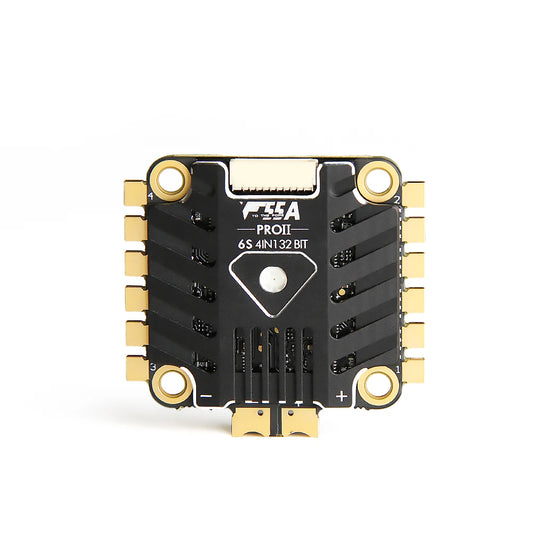
T-Motor F55A PROⅡ 6S 4IN1 LED 32bit ESC - Electrical Speed Control For FPV motors RC Racing Drone
Regular price $114.31 USDRegular priceUnit price per$148.61 USDSale price $114.31 USDSale -
T-Motor V45A LITE 6S 4IN1 ESC - Lighter Weight, Electronic Speed Control for FPV RC Racing Drone Motor…
Regular price $55.88 USDRegular priceUnit price per$72.64 USDSale price $55.88 USDSale -
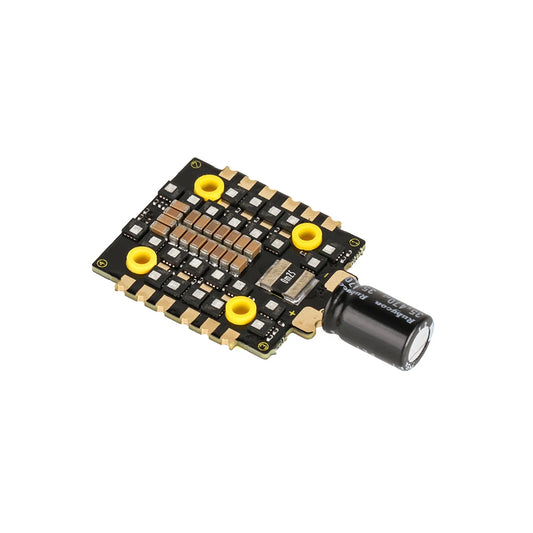
T-motor MINI F45A 6S 4 IN1 32 BIT 3-6S ESC - Electronic speed controller For FPV RC Drone Racing
Regular price $94.94 USDRegular priceUnit price per$123.43 USDSale price $94.94 USDSale -
T-MOTOR F35A ESC - 3-6S 32Bit High Quality Speed Controller for RC FPV Plane
Regular price $35.18 USDRegular priceUnit price per$45.74 USDSale price $35.18 USDSale -
T-MOTOR ESC Air 20A ESC - (3-4S 600HZ NO BEC) Brushless Motor Electronic Speed Controller for Multicopter
Regular price $24.99 USDRegular priceUnit price per$34.98 USDSale price $24.99 USDSale -
T-MOTOR ESC Air 40A ESC - (2-6S 600HZ NO BEC) Brushless Motor Electronic Speed Controller for Multicopter
Regular price $48.68 USDRegular priceUnit price per$63.29 USDSale price $48.68 USDSale -
T-motor Flame 180A 6-14S HV ESC - Electronic Speeds Controller For VTOL Multicoptor UAV Drone
Regular price $310.75 USDRegular priceUnit price per$372.90 USDSale price $310.75 USDSale -
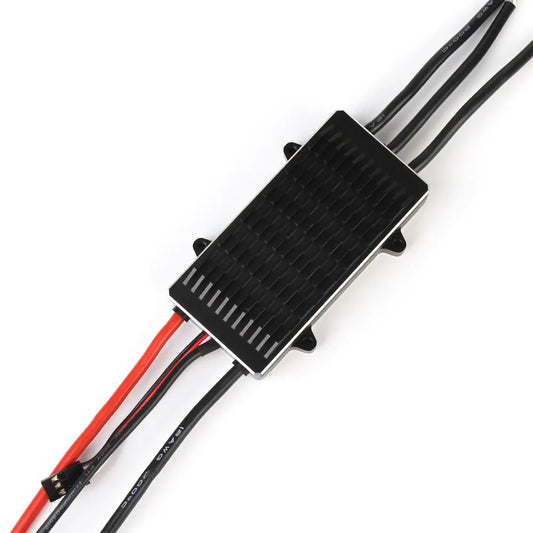
T-motor Flame 100A HV 500HZ 6-14S LIPO ESC - For Helicopter Multi-rotor Quadcopter UAV RC Drones
Regular price $155.42 USDRegular priceUnit price per$186.51 USDSale price $155.42 USDSale -
T-motor FLAME 70A LV ESC - Tiger brushless motor (4-6S 500HZ NO BEC) Special Designed For Multirotors
Regular price $85.21 USDRegular priceUnit price per$110.77 USDSale price $85.21 USDSale
